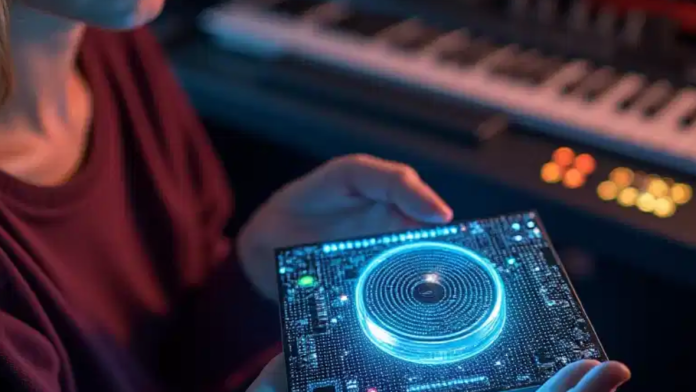A bump on the road toward long-established goals? Or the systematic theft of creative value?
The answer depends on how we analyze the situation—and our success in countering the challenges with the right tools. The timing of our response will ultimately decide whether we succeed.
The Reality We Face
The evidence is undeniable: we are witnessing the industrial-scale appropriation of creative works. Major technology companies are training AI systems on pirated content—transforming stolen creativity into competing products that displace the very creators they exploit.
This is not traditional piracy. It is the industrial harvesting of human creativity, operating beyond—or in the absence of—transparent ethical boundaries.
- Meta secretly trained AI models on Library Genesis, a massive repository of pirated books.
- OpenAI’s GPT-4 reproduces copyrighted content in 44% of book-related prompts.
- The global cost of copyright infringement exceeds $53 billion annually, yet enforcement recovers just 11%. Major catalogues for AI training datasets are valued between $500,000 and $3M on the dark web.
And while the EU rolls out Chat Control to scan private messages, hackers in the shadows are building something far more dangerous: AI systems trained on stolen data that ignore privacy rules entirely.
The grab for creative assets has already begun. The real question is not if this affects the creative industries—it is whether we are prepared for the coming quantum deadline, when today’s protection systems will become obsolete overnight.
The Big Tech Exploitation Machine
Digital transformation promised creators global reach. Instead, we see systemic exploitation:
- Opaque algorithms that marginalize independent voices.
- Revenue distribution models that prioritize aggregate data over individual attribution.
- A shift toward AI-driven business models fueled by human-made creative content.
This isn’t just about revenue lost today—it’s about the very foundations of tomorrow’s creative economy.
AI-driven “copyright laundering” makes matters worse: stolen works are algorithmically modified and reintroduced as “original” AI-generated content. Traditional enforcement methods cannot keep up.
Even Collective Management Organizations (CMOs) and Performance Rights Organizations (PROs), though well-intentioned, face challenges. Their much-criticized “black box royalties” are now resurfacing in AI strategies—this time reframed as part of the future solution, rather than acknowledged as part of the old problem.
The Quantum Deadline — Why the Time to Act Is Now
IBM has committed to fault-tolerant quantum computing by 2029. This creates an immutable deadline. Once operational, quantum computers will render today’s encryption methods useless—overnight.
But quantum also offers the solution:
- Quantum-enhanced detection systems can identify infringement patterns invisible to classical computing.
- They can prove ownership even when works are heavily modified.
- Organizations that adopt quantum-resistant infrastructure now will form the backbone of the next creative economy.
This transition will not be gradual. It will be sudden and absolute. Delay means vulnerability. Early action means resilience and leadership.
What Needs to Be Done
I have chosen to actively engage in constructive solution-building because I believe true progress requires co-innovation between creators and technologists—something still far too rare.
I care less about who delivers the solutions than that they are delivered—urgently and effectively.
Here are some initiatives I have been working with as an advisor to New Internet Media, already shaping this transformation:
- AI-powered surveillance Processes 4,800+ verification requests per second with 98.7% accuracy. Detects modified/remixed content, automates licensing, creates immutable blockchain ownership records, and enables micro-transactions as small as $0.50.
- The Fair Music Project (led by the International Music Council, with support from the EU Creative Europe Programme) Builds user-centric, blockchain-enabled royalty systems ensuring compensation for every listening event. Integrates MusicDNA for rich metadata and enables decentralized licensing—ensuring local repertoire reaches global audiences.
- Copyright securitization through Series LLCs (Wyoming SF0038 & SF0050) Converts individual copyrights into discrete financial assets, isolating risk and creating clean, immutable ownership records. This bridges on-chain tokens with off-chain corporate filings—unlocking significant unrealized market value.
The Defining Choice
This is not a distant concern. Hackers and corporations alike are already exploiting stolen creative works to train AI systems that operate beyond ethical and legal frameworks.
The organizations that will thrive are those that shift focus from content creation alone to infrastructure ownership—the systems that enable value creation, protection, and monetization at scale.
The future belongs to those who build the infrastructure, not merely those who use it.
The quantum deadline is approaching. Infrastructure is being built. The market is transforming.
How is your organization preparing for the quantum transition and the systematic exploitation of creative assets?
#IntellectualProperty #QuantumComputing #Copyright #AI #Innovation





















